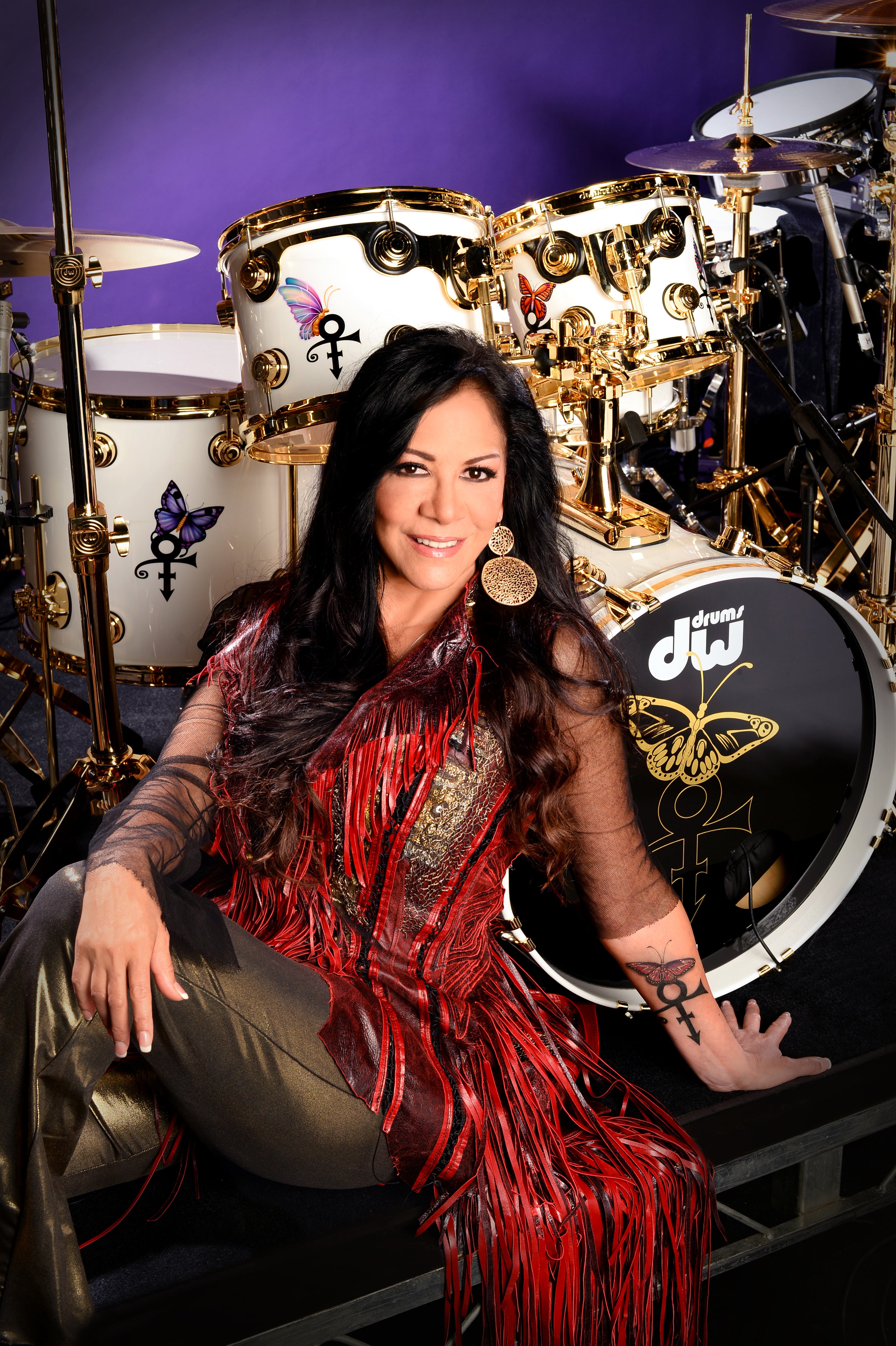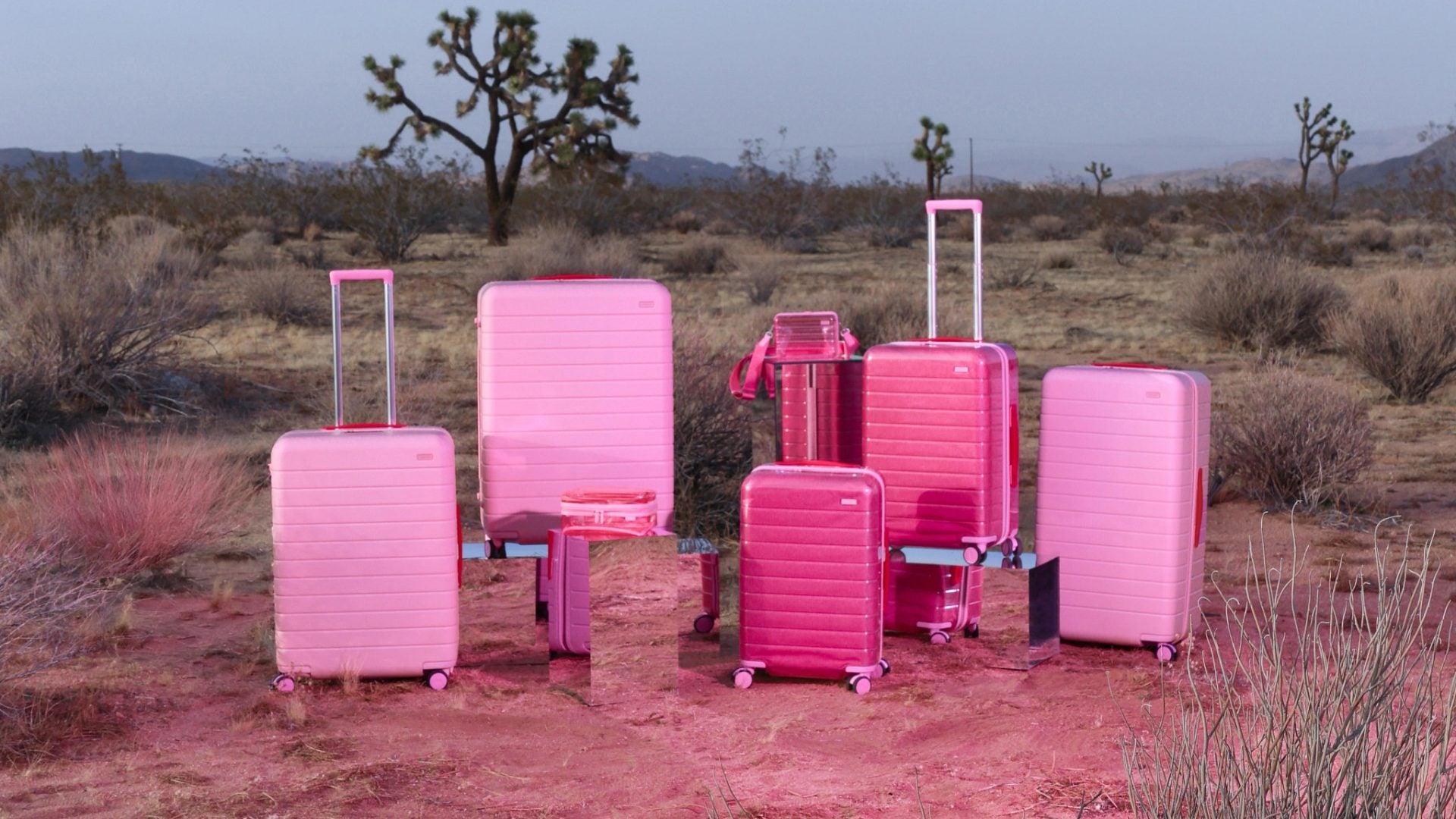
The day after playing a brief set (“The Glamorous Life,” “Oye Como Va”) at the 12th annual gala of Harlem’s legendary Apollo Theater, Sheila E. bumps into teenage Beyoncé protégés Chloe and Halle speaking to high school girls at ESSENCE and totally makes their day.
(Cue selfies!)
The celebrated drummer knows a little something about the protégé label, having worked closely with Prince in the 1980s, but of all his collaborators, she deserved the tag the least. Because before the two laid down “Erotic City” in 1984, Sheila had already played timbales with Marvin Gaye, Herbie Hancock, Lionel Richie and others on tour. By that point, she had also recorded Solo Two with her father, famed percussionist Pete Escovedo.
Sheila E.’s career preceded her Prince association and transcended it afterwards, with albums like Sex Cymbal, continuous live shows worldwide, and a 2009 win on the CMT reality show Gone Country. Thrust back into the pop spotlight last year after Prince’s untimely passing (the two were once engaged, as detailed in her 2014 memoir), she’s on the media trail promoting the politically-charged covers album, Iconic. Crowdfunded at PledgeMusic, Iconic will be full of guest stars doing duets on songs like “One Nation Under a Groove,” “Respect Yourself,” and Prince and the Revolution’s “America.” Sheila E. speaks with ESSENCE about the origins of Iconic, her Paisley Park Records releases, Oakland funk and more.
You were musical director and drummer of Prince’s Sign o’ the Times Tour in 1987. Most now consider that album to be even greater than Purple Rain. How did that come about?
I was performing with my band, opening for Lionel Richie at the time. I told Prince, management and everyone else that I was tired of being a solo artist. I wanted to take a break. I just wanted to play as a musician and not have the responsibility of being a solo artist, because I had hit a wall. I was done for a minute. I just wanted to stop for a while, go play some other music and just play drums and percussion. So he said, “Oh, okay. Well, I’m gonna disband my band, so you wanna come play with me?” And I was like, “Oh, cool.”
So when I disbanded my band, I’d brought with me Boni Boyer, Miko Weaver and Levi Seacer. And the other half of that band ended up starting their own band: Tony Toni Toné. The process for Prince was really just putting together music, and the idea of a line-up of songs for the show.
But since I recorded with him most of the time, I knew where all the tracks were. Back in that time, you know, we recorded on tape!
Analog world!
Analog world, which is amazing! But that was the thing. Back then, unless you were running two machines, you had just 24 tracks—if you were running two, it would be 48. So for Prince during that time, he would record more than one instrument on a track. If it said “keyboards” and maybe “a guitar line,” it really wasn’t just that on that track. And I was one of the only ones who knew what were on the tracks, ’cause I was in the studio with him all that time. He’d just punch in different sounds on the same track.
So it was getting those things, and sampling some of those as samples. I would sample ’em and put triggers on all of my drums. I think I had eight toms, so that was eight triggers, including the snare. I’d be able to sample his screams and different things, or drum licks. And playing drums. I had probably about eight or 10 switches on the floor. The double-kick pedal, the hi hat. Switches to change programs in the middle of the songs. And turning on and off the claps on the snare. There were so many pedals on the floor; it was not just playing drums.
It was a lot of work, ’cause it wasn’t just being the musical director. It was getting the samples, playing the drums, getting all those sounds together. Then we would rehearse with the band. At the very beginning, he said, “I’ma go leave for like a couple of weeks and come back and check out rehearsal.” He couldn’t stay away that long. [laughter] He was way too anxious to come back in and see what it sounded like.”
You’d basically given Prince an Oakland band of musicians for the Sign o’ the Times Tour. What makes Oakland funk different?
“It is totally different, actually. Like Tower of Power. Besides Sly [Stone] and Tower, we’ve created our own sound. Like my dad—even though it’s not funk—fusing Latin jazz with what I do is very important to continue the legacy of bringing in percussion into the funk, which not a lot of people did much of. [If] you look at D.C., you got the go-go thing happening. It was a little bit different; our thing was more syncopated, I guess I could say. Tower of Power was very syncopated in what they did, Dave Garibaldi with what the bass was playing. Everyone had their parts.
With Sly, it was a whole other kind of funk. What he did and what he played was totally different. He created that sound everyone wanted to emulate. I don’t know what it is; I always say it’s something in the water. A lot of us grew up in the Bay Area listening to bands. It’s part of the culture, being able to go and hear all the different types of music, the different genres of music, from Oakland to San Francisco, all meshed together. That sound is how I grew up, listening to all those bands. I incorporated all those sounds into who I am: a little bit of the Sly and the funk and the Tower of Power and my dad and Santana and all those things.
It’s a multicultural sound. I think that was the blessing of being born and raised in the Bay, [using] the multicultural sounds of bands to create your own thing. There are not a lot of places you can hear all those different genres of music in one place I don’t think.
Tell us about the genesis of your latest record, Iconic.
I was working on a dance record before [Prince] passed. I just wanted to do a dance record with dance music, not anything deep, just do a dance record. I’d never done a dance record before, I thought it’d be fun. And in the midst of doing that, he had passed. We started writing some other music that started with “Girl Meets Boy.” That was the first song written after he passed. We continued to write songs after that.
But during that process of him passing and dealing with that publicly, the different things that have happened to our country at the end of 2016… 2016 was just an insane year. I don’t even talk about it a lot. Through that process, we decided to do something different. But it was interesting, ’cause over a year ago, in my folder of archives and archival music, we had called the folder Politically Correct. So we knew we were gonna do this record, but it was gonna be a little bit different. We had already written some songs for it, the Politically Correct record. I just knew it would take me longer to write this record because there were things I needed to say lyrically that you can’t just write overnight. We chose to pull songs [from] when I was growing up in the ’60s and the ’70s, songs that meant something to me that are now relevant to where we are now. Songs like “Come Together” from the Beatles, Sly and the Family Stone “Everyday People,” Curtis Mayfield “Pusherman,” Marvin Gaye “Inner City Blues.” “Jesus Children of America,” Stevie Wonder. I did a James Brown medley. So we have Bootsy Collins on board, George Clinton. Israel Houghton, a gospel artist. Ringo Starr. We have Angela Davis, and Dolores Huerta, who’s also an activist for the Latin people but for people in general. Candy Dulfer playing sax on “America.”
What memories do you have of recording your debut, The Glamorous Life, with Prince?
We recorded at Sunset Sound [studios], I think we recorded the record in a week. It was basically staying up the whole week, getting it done and turning it in. It happened fast.
Did he have the songs already, give you guide vocals and say, “This is what it is”?
No. When we were going to go into the studio, he had been listening to songs and tapes that I recorded. And it was really cool because I think that was what he loved. He would just [say]: “here’s the room, go play, do whatever. I’ll come back and see what you’ve done.”At Sunset Sound, I think we had two studios. We were always in the studio together, either in the same room or back and forth in two studios. That’s what we did. We kept going back and forth to who was doing what. That was kind of the process of that record.
What do you recall from recording the next record, Romance 1600?
Not much. I just remember we were out on tour. That second record was done during the tour. So wherever we’d stop, if we had four hours, we’d just go into the studio on the way to the gig. It was just a matter of, “Let’s call ahead of time. We’re going to this city, let’s see if we can get a studio.” So that was a blur, again. I also had on my bus a recording studio, so I was able to record and get ideas in the back of the bus. And by the time we got into the studio, those ideas we would just record in the studio.
Around the making of Sheila E, your third record on Prince’s label, you said you wanted to take a break. Did you have that feeling while making that album? Was it a contractual obligation?
Nah. I just wanted to do something different. So even the approach of what we were doing was different. Writing with different people, and incorporating more writing with my band members as well, because they were very talented.
Did you feel that Prince was playfully competitive in terms of being a drummer himself?
Yeah, he played a little bit of something. But I gave him a run for his money, so there was no competition there. [laughter] Other things maybe, but not drums, no. [laughter] No, he could play though. He had certain rhythms he could play that were really cool, that were different than what I would choose to play. Which made it so dope, absolutely.




